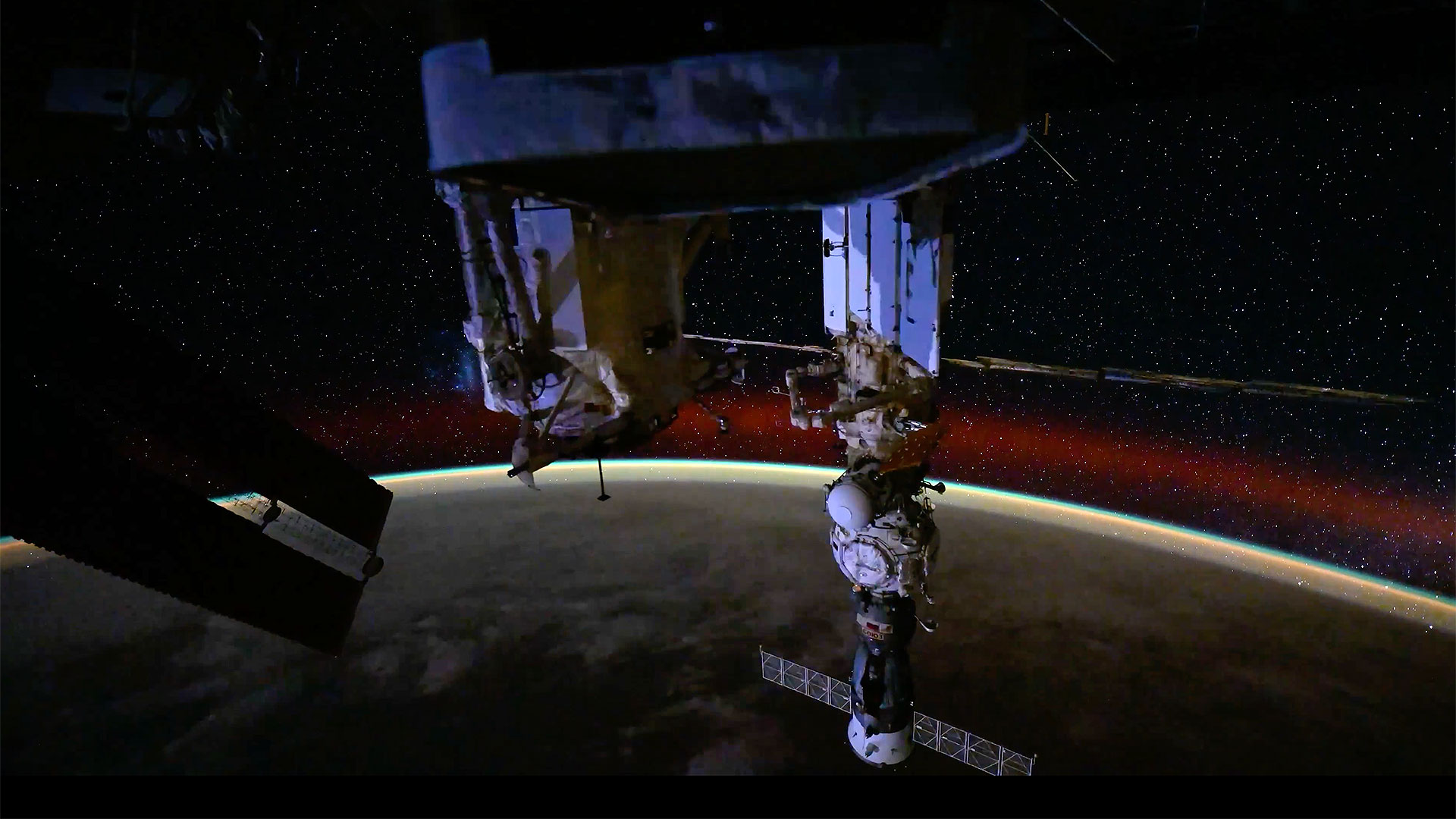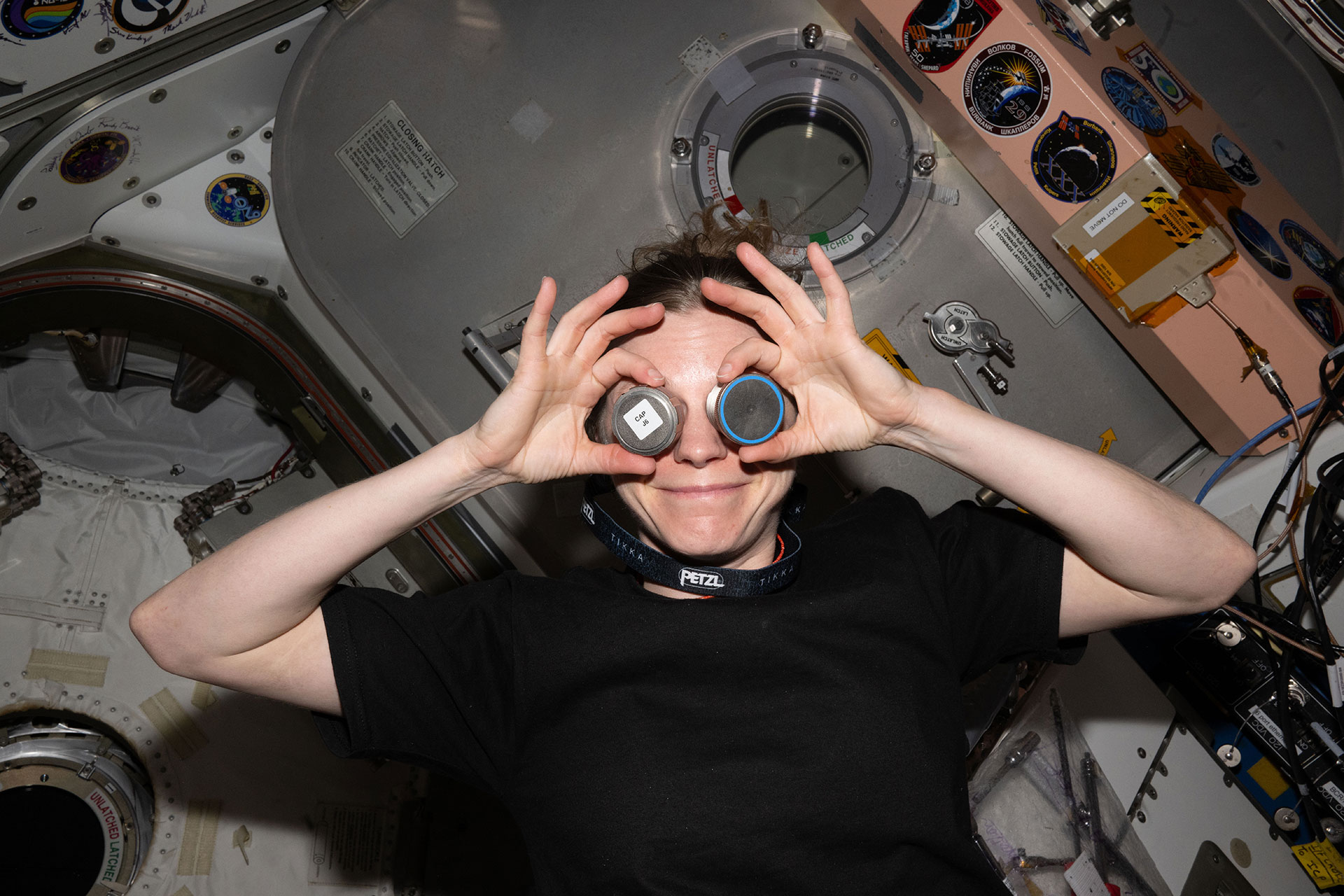Astronauts welcome arrival of new crewmates | On the ISS this week Nov. 24-28, 2025
Three new crewmates brings Expedition 73 to briefly include 10 members.

Orbital observation
On Thursday (Nov. 27), Russia's Soyuz MS-28 spacecraft docked to the Rassvet module with three new crew members for the space station.
"In this photo, too, the two spacecraft [Soyuz MS-28 and MS-27] are parked side by side so amicably, aren't they? With 10 crew members on the ISS during the handover period, it's quite lively," wrote flight engineer Kimiya Yui on social media from the International Space Station (ISS).
Soyuz MS-28 crewmates NASA astronaut Chris Williams and Roscosmos cosmonauts Sergey Kud-Sverchkov and Sergei Mikaev will spend the next eight months on board.

Science status
Among the research that was conducted by the Expedition 73 crew aboard the space station this week was:
Ultrasound 2 — Doctors on Earth watched live as Zena Cardman used a portable ultrasound to scan Jonny Kim's chest in an effort to better understand how his heart is adapting to living in space.
Droplet — In an effort to create better optical materials and develop better ways to remove pollution, Mike Fincke used a fluorescence microscope to sample hardware so scientists could see how particles behave inside fluids.
Station keeping
The Expedition 73 crew also devoted time to maintaining the space station's systems, including:
Soyuz MS-27 — Working inside his soon-to-be ride home, Expedition 73 commander Sergey Ryzhikov checked the electronics and communications systems aboard the Soyuz MS-27 spacecraft and then continued loading cargo inside for his, Alexey Zubritsky and Jonny Kim's return to Earth.
Breaking space news, the latest updates on rocket launches, skywatching events and more!
Astronaut activity

To prepare for the arrival of Soyuz MS-28 with three new crewmates, Northrop Grumman's Cygnus XL cargo ship, the S.S. William C. "Willie" McCool, needed to be unberthed and held at a distance by the International Space Station's Canadarm2 robotic arm so as to give ample room for the docking.
Here, Expedition 73 flight engineer Zena Cardman of NASA takes a break from closing the hatch to the Cygnus capsule to pose for a photo while holding up a couple of equipment covers as if they were a pair of goggles.
By the numbers
As of Friday (Nov. 28), there are 10 people aboard the International Space Station: Expedition 73 commander Sergey Ryzhikov and Oleg Platonov, Sergey Kud-Sverchkov and Sergey Mikaev of the Russian space agency Roscosmos; NASA astronauts Zena Cardman, Mike Fincke, Jonny Kim and Chris Williams of NASA and JAXA (the Japan Aerospace Exploration Agency) astronaut Kimiya Yui, all flight engineers.
There are three docked crew spacecraft: SpaceX's Dragon "Endeavour" attached to the space-facing port of the Harmony module, Roscosmos' Soyuz MS-27 attached to the Earth-facing port of the Prichal node and Soyuz MS-28 attached to the Earth-facing port of the Rassvet module.
There are four cargo spacecraft: Roscosmos' Progress MS-31 (92P) docked to the space-facing port of the Poisk module, Progress MS-32 (93P) attached to the aft port of the Zvezda service module, Northrop Grumman's Cygnus XL, the S.S. William C. "Willie" McCool, temporarily at the end to the Canadarm2 but soon to be berthed again to the Earth-facing common berthing mechanism (CBM) on the Unity node and Japan's HTV-X1 attached to the Earth-facing CBM on the Harmony node.
As of Friday, the space station has been continuously crewed for 25 years and 26 days.

Robert Pearlman is a space historian, journalist and the founder and editor of collectSPACE.com, a daily news publication and community devoted to space history with a particular focus on how and where space exploration intersects with pop culture. Pearlman is also a contributing writer for Space.com and co-author of "Space Stations: The Art, Science, and Reality of Working in Space” published by Smithsonian Books in 2018.
In 2009, he was inducted into the U.S. Space Camp Hall of Fame in Huntsville, Alabama. In 2021, he was honored by the American Astronautical Society with the Ordway Award for Sustained Excellence in Spaceflight History. In 2023, the National Space Club Florida Committee recognized Pearlman with the Kolcum News and Communications Award for excellence in telling the space story along the Space Coast and throughout the world.
You must confirm your public display name before commenting
Please logout and then login again, you will then be prompted to enter your display name.
